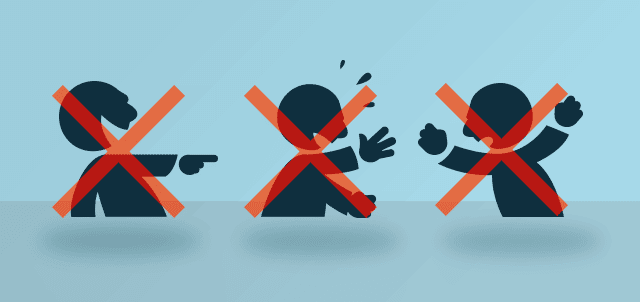In the television series Lie to Me, actor Tim Roth plays Cal Lightman, an expert of !!!!!! expressions and involuntary body language. Lightman seemingly watches people for the briefest of moments and interprets whether they’re lying, uncomfortable or telling the truth.
In television, such feats are possible. In a real workplace, employees may not notice or understand why they feel their boss doesn’t like them or appreciate them, but your body language influences them all the same.
Being mindful of your own and others’ body language can be a useful tool for all leaders to develop.
Today’s #1 mistake
These days, the number one body language mistake people make involves electronic devices. Looking at your phone or texting while someone is trying to talk to you conveys a lack of respect for the other person and what they have to say.
If you’ve picked up this terrible habit (and few of us haven’t), remind yourself to put your phone in a desk drawer or in your pocket. Learn how to use your phone’s settings quickly to stop ringing, buzzing and vibrating while you are in meetings or during impromptu conversations.
If your whole team is guilty of checking their phones in meetings, consider asking everyone to turn off their phones or put them all in the center of the meeting table for the duration. Another alternative, create a penalty jar so that offenders put in $1 every time they look at their phone during a meeting. Have the entire team monitor one another and use the money for a group lunch or other fun activity.
Once you’ve mastered the art of ignoring your phone when necessary, it’s time to work on other common body language mistakes seen in the workplace.
Eye rolling, head shaking, throwing up hands, sighing or fidgeting
These expressions of exasperation or disagreement are sure to stop open dialog and creativity. Think about it: If someone frowns and starts shaking his head while you explain a new process, what are the chances you’ll be able to present at your best?
Turning your back
This signals to the person at your back that you want to exclude them from the discussion whether in meetings or during group conversations.
Avoiding eye contact
In the U.S., steady eye contact without staring conveys interest and openness to feedback. Lack of eye contact tends to make others feel you have something to hide. However, be aware that other cultures perceive eye contact differently. Regardless of how you were raised, you should try to adapt your eye contact to the audience at hand.
Body crossing
Crossing your arms or legs is considered a defensive posture, a closing off. Literally, a person crossing their body with their arms is protecting themselves from unwanted or distressing information. But we all have a tendency to cross our arms and legs when we’re cold. Try to avoid this action during serious conversations with employees. They may read more into this posture than you intended.
Not shaking hands at appropriate times
Say you, the CEO or HR director, are meeting an employee for the first time. If you don’t shake the employee’s hand at the beginning of the meeting, it signals that you don’t value that person. Always shake hands to convey basic respect.
Aggressive or disrespectful posture
Aggression and disrespect can take many forms in the workplace and all are demotivating to your employees. Such postures include: Standing too close or too far away. Raising your voice or shouting. Clenched fists. Walking away. Pointing or jabbing with the finger. Looming over someone sitting at their desk.
Poor meeting manners
In meetings, sit upright and face those talking to you to convey your interest and openness to hearing what they have to say. Nothing derails a meeting faster than the leader rolling their chair far from the table. It’s a signal that you’re not part of the team. If you can’t see during a presentation or need to move to face someone who’s talking, that’s one thing, but roll back to the table once the presentation is over. Make regular eye contact with everyone in the room if you’re the one speaking. And remember to turn off your phone.
Ask for feedback
It can be hard to recognize your own body language mistakes, so ask a trusted colleague or even your boss to point out any poor body language habits you may have.
Have this person watch you and your employees in a meeting, for instance, and report back to you with any suggestions for improvement. If you’re like most people, you probably aren’t aware of crossing your arms when asked a question you weren’t prepared for or didn’t like. You may not notice that you interrupted or talked over certain colleagues.
Particularly as a supervisor, it’s important to set the standard among your employees for positive body language. Remember, employees observe and internalize everything their leaders do. Being more self-aware of your body language can help you motivate and encourage your team without them even knowing it.
Hone your management skills as well as your body language. Download our free guide, How to Develop a Top-notch Workforce That Will Accelerate Your Business.


